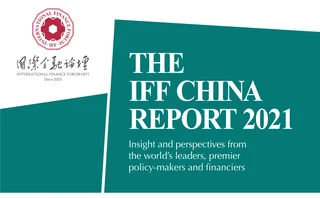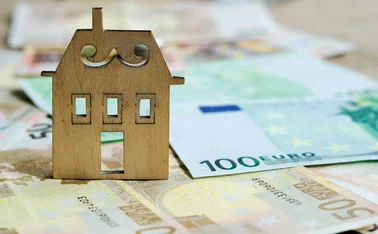
Reaping the social and global dividend


As with many other nations, the Covid-19 pandemic made New Zealand stop, focus on the needs of its people by attempting to keep them healthy, and minimise the economic impact of the virus – although this is extremely variable across different economies.
The New Zealand agricultural sector continued to perform well; there remains a worldwide demand for food and our supply chains. But, interestingly, as with many other countries, supply chains have been affected because air travel and, to some extent, sea travel have been disrupted. So even developed economies that have been able to manage the pandemic well are being impacted in a variety of ways.

The other observation through a New Zealand lens is that many roles or jobs across many economies engaged with the Belt and Road Initiative (BRI) have been impacted by changes to tourism.
We have been so comfortable sharing each other’s cultures and experiences, seeing that as an important part of our search to understand each other, seeking to cross and visit each other both in time and culture, as well as with our financial instruments. What was once familiar has been disrupted. For the BRI, and the confidence and comfort it had been developing, this dislocation of relationships may have a longer-term impact than we might initially have assessed. Overall, though, New Zealand is faring well and is excited by some of the trends emerging.
Taking the global view
All countries should acknowledge the need, as we look to recovery, to engage at a multilateral level. The signing of the Regional Comprehensive Economic Partnership (RCEP) agreement in 2020 was an exciting milestone. At this time in global history, it is extremely important for confidence to be maintained, despite an erosion of confidence in multilateral mechanisms. This step by countries along the BRI route – China in particular – and many other nations, large and small, is an important signal of collaboration and recovery, and also a commitment that our solutions will be found together, not by acting in isolation.
Finance can only work successfully if relationships are well established. The BRI relies on strong bilateral and multilateral relationships, and government-government, industry-industry and multiple finance sectors to converge.
Another important signal came from President Xi Jinping at the Asia-Pacific Economic Cooperation (APEC) meeting in November 2020, at which he indicated that China would continue to seek multilateral opportunities to engage, and that the nation would consider joining the Trans-Pacific Partnership (CPTPP). These are important signals at a time when other major economies in the world are acting tentatively, and the UN and other international mechanisms are struggling to maintain their historic relevance. This type of leadership, which can come from many economies across the BRI region, is critical.
As for financing in a post-pandemic environment, domestic economies are remaining cautious, pausing at this moment because they are not certain what the overall medium-term impact of the pandemic will be and the economic impact that will spill over from it.
While we are receiving a lot of macroeconomic data, and many individual governments are injecting significant sources of stimulus, it’s not yet clear how this will seep across individual economies, or how they will flow through to confidence over co-investing with partner economies. We need to give economies time to look at their current levels, the impact of Covid-19 and their short-term prospects as they look ahead. They must then look at what international and bilateral communities can do to assist them – particularly the developing economies in coming through what will inevitably be a demanding situation.
While money has been put on the table by a number of the international lending institutions, it is clear the slow uptake by some economies is due to a deep level of caution. This caution stems not from current levels of debt and concerns over further debt traps, but is a rather predictable byproduct of this very significant disruption.
Whether the Group of 20, APEC, RCEP or other regional and bilateral groupings, there has never been a more important time to openly and honestly engage in a meaningful way before making new commitments. We will need flexibility from the Asian Infrastructure Investment Bank (AIIB), the Asian Development Bank (ADB) and other institutions as we move forward, and it is clear we need investment. But we must not see the investment become unmanageable, be made in the wrong areas or become an unforeseen debt burden in three or four years’ time. Green finance at its best will ensure this does not happen.
Green finance strategies
There are many governments that will take a receptive view of collaborating, whether through the AIIB as a funding mechanism, directly through regional or bilateral arrangements, or through China with its BRI partners. Medium-term benefits through financing, conditions and terms will lead not only to a financial dividend, but also the social and global dividend. The whole sector, whether public, private sector or government, needs to debate at this time how they are going to weigh up the difference in those dividends. In the past two decades, the finance sector has been preoccupied with the financial dividend associated with investment. We have to weigh up if we are going to deliver some of the medium-term objectives of carbon neutrality, reduction in emissions, and so on. At some stage in the green finance environment, a specific debate should be held on how we weigh up the different benefits and dividends that come from a green finance strategy.
So, what can make a difference? One difference could be the Global Green Finance Innovation Award sponsored by the Silk Road International Association (SRIA) through its role in the International Finance Forum. There are a wide range of mechanisms and strategies in those initiatives, which lie at the heart of the future. For example, one of the winners proposed an insurance model pricing risk fully into mechanisms that underpin either regions or whole economies. So, rather than just continuing counterproductive behaviours, we will actually price risk properly and achieve goals and outcomes in a different way. This is highly innovative and relevant not only to the BRI, but to the whole world. I hope that many of the initiatives can be replicated and shared by all who are part of the SRIA.
We should also target directors of companies. They are not immune from responsibility, and we need to ensure – especially those in the Asia-Pacific region and other areas with economic momentum – they are achieving the best outcomes.
The work will be hard. In New Zealand, 85% of energy is already renewable. As part of this post-pandemic investment, the government is considering how to change this final 15%. By investing and attempting to regain the growth momentum in local and global economies when we might otherwise see a lag, we must take a medium-term view that will benefit the immediate and medium-term requirements of our economic, social
and environmental conditions, and future wellbeing. This approach will be good for New Zealand and for the region, while contributing to global needs for these types of future focused investments.
Only users who have a paid subscription or are part of a corporate subscription are able to print or copy content.
To access these options, along with all other subscription benefits, please contact info@centralbanking.com or view our subscription options here: subscriptions.centralbanking.com/subscribe
You are currently unable to print this content. Please contact info@centralbanking.com to find out more.
You are currently unable to copy this content. Please contact info@centralbanking.com to find out more.
Copyright Infopro Digital Limited. All rights reserved.
As outlined in our terms and conditions, https://www.infopro-digital.com/terms-and-conditions/subscriptions/ (point 2.4), printing is limited to a single copy.
If you would like to purchase additional rights please email info@centralbanking.com test test test
Copyright Infopro Digital Limited. All rights reserved.
You may share this content using our article tools. As outlined in our terms and conditions, https://www.infopro-digital.com/terms-and-conditions/subscriptions/ (clause 2.4), an Authorised User may only make one copy of the materials for their own personal use. You must also comply with the restrictions in clause 2.5.
If you would like to purchase additional rights please email info@centralbanking.com test test test







